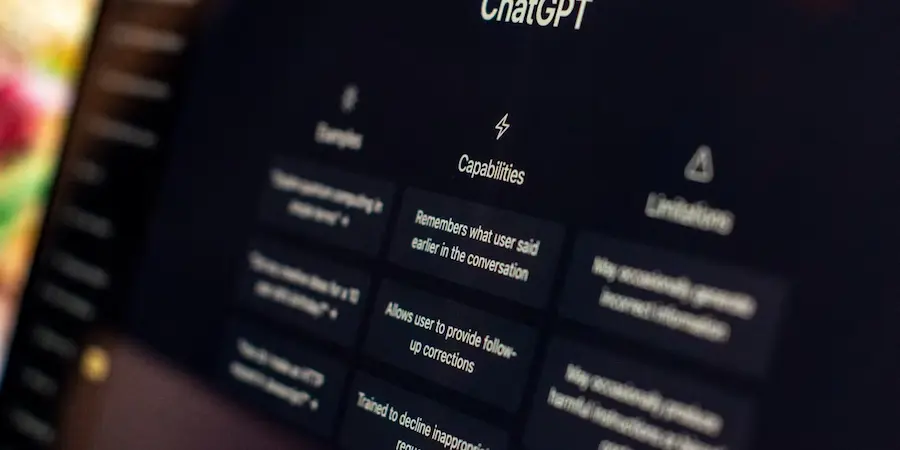OpenAI just made a leap that sounds like a turning point: you can now use third-party apps directly inside ChatGPT, without tabs or floating windows cluttering your desktop. The experience becomes something like an app store you talk to, where responses don’t remain mere recommendations but turn into real actions. Can you imagine asking for a playlist and having it appear without leaving the chat? That’s already happening.
How it works: from prompt to action, without leaving the chat
The mechanics are as natural as giving an order to an assistant, but on steroids. You can invoke services like Spotify, Booking.com, Expedia, Canva, Coursera, Figma or Zillow simply by describing what you want to do: from “create a new playlist on Spotify” to “find me an apartment on Zillow.” ChatGPT recognizes the intent, calls the appropriate app and integrates the result into the conversation thread.
Also, the system is proactive: if you’re planning a trip, Expedia or Booking.com will appear contextually; if you’re designing a logo, Figma will take over. The first time you use an app, ChatGPT will request permissions and show you what data will be shared, asking you to connect your account if necessary. After that step, the app becomes “context-ready,” reappearing when the flow requires it.
The visual experience also levels up: apps can render fully interactive elements — maps, videos or diagrams — directly in the chat, so the thread becomes a conversational control center where you operate without switching tools. It’s like having a conversational IFTTT, but with embedded, real-time results.
Availability, permissions and user experience
OpenAI has enabled this feature for all ChatGPT users outside the European Union, and across all plans: Free, Go, Plus and Pro. The key is that the model distinguishes when an app can help and invokes it with the user’s consent, keeping a clear flow about what data is shared in each integration. There are no links or pop-up windows: everything happens in the same chat.
This approach reduces friction both for everyday tasks and for more complex flows: booking a hotel without leaving the thread, creating a sketch in Figma while iterating with the assistant, or exploring an interactive map that adapts to the filters you describe by text. In fact, the interface resembles issuing a command in a terminal, but with rich, interactive results instead of plain text.

OpenAI says ChatGPT is on track to reach 700 million weekly active users and that its active user base has nearly quadrupled compared to last year — a context that explains why this integration arrives now: the volume and diversity of use cases make it sensible to convert the chat into the unifying layer for actions.
For developers: Apps SDK, agents and the road to a “quasi-OS”
Alongside the launch, OpenAI is opening the door to developers with a new Apps SDK based on the Model Context Protocol (MCP). In practice, this makes it easier to build apps that live inside the chat and expose capabilities through a consistent framework, as if you were designing a REST API that the model understands and orchestrates securely. The result: fewer context switches and more direct value for the end user.
The company also presented AgentKit, a set of tools to build and deploy AI agents with less friction. It includes Agent Builder, a visual editor that lets you design agent workflows almost as if you were composing in Canva, with the goal that these assistants reason, act and adapt autonomously. OpenAI has already hinted at upcoming integrations with services like DoorDash, Instacart, Uber and AllTrails, suggesting coverage of more everyday tasks from within the chat.
For now, there is no central catalog to “install” apps manually. Integrations emerge when you invoke them or when ChatGPT detects they can help. They haven’t yet detailed how these apps will be monetized, although given the precedent set by the GPT Store, it wouldn’t be surprising to see a more formal storefront in the near future.
The move places OpenAI in a peculiar position, halfway between Google and Apple, which control their own operating systems. With this update, ChatGPT begins to resemble a conversational operating system, a layer where apps run at the command of natural language and results are embedded in the same space where you think and decide. The short-term goal? Turn the chat into your universal execution panel; mid-term, consolidate an ecosystem of apps and agents that live natively inside the conversation.
If everything proceeds as planned, this could be the moment when AI stops being only a source of answers and becomes the place where things happen. And there, each prompt turns into a concrete action, each app into a reusable block, and each chat into your new primary interface.

